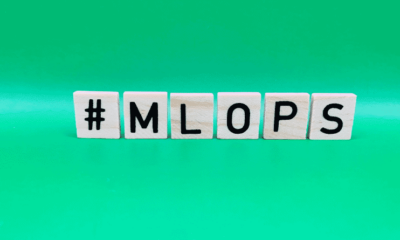
Artificial Intelligence and eSports are a match made in digital nirvana. The tech world is always racing to one-up itself, and pairing AI with the competitive gaming world is a symbiosis that will crown winners among the brave… and leave the others quivering on the sidelines.
Becoming tastemakers and thought leaders on the front lines of eSports domination requires innovation. Cutting edge products will enable creators to bring their visions to life, which will convince investors to back those at the cutting edge of the field, in turn drawing more clients and consumers to the projects accelerating the fastest due to their implementation of Emotion AI. It’s a chain reaction of success, and the proverbial fuse is about to be lit.
The Current eSports Landscape
Instead of focusing on the competitive aspects of the gaming industry, let’s begin with the win-win. eSports is a billion-dollar per year juggernaut, and it’s growing at an exponential rate of 38% this year alone. That makes for a big enough arena to welcome armies of players into the virtual fray. As with any growing pains, the tendency is for all of these actors to collide, but synergy can help formulate a strategy to broaden the tent and convince even more gaming fanatics to hit PLAY.
Consider a newbie’s inaugural experience in the daunting world of eSports. They choose a game title, craft their avatar, and enter the melee. It can be as exciting as it is confusing, just like a team sport IRL. Players need to work together while also striving for individual accolades, a balancing act that requires the right user interface. If it’s too opaque, they could give up. If it’s overly namby-pamby and hand-holdy, the game won’t hold their attention. Either way, you’ve lost a customer.
So how does technology maneuver this touchy dichotomy to beautifully integrate technology into the world esports to not only better the gaming experience, but also transform the industry as a whole? That is where emotion AI comes into play.
The Role of Emotion AI in the Game
Recognition technology benefits developers and gamers alike. On that first point, Emotion AI can support creative types by lending them a technical hand when it comes to moderating and maintaining their experiences. Developers want to amplify the fun of their game by minimizing the drama, especially in the form of negativity. By using toxicity detection, AI software can root out the mannerisms of players who have the propensity to ruin the game by lashing out at their teammates. Studies have shown that the collective enjoyment of multiplayer online games is inversely proportional to the level of toxicity distributed through the community. Put more simply: ratcheting down the bullying builds up the enthusiasm of the consumer base as a whole.
The advancements of behavioral signal processing can identify a potentially toxic individual by analyzing her or his vocal patterns, modulations in their play patterns, and the user’s overall digital demeanor. This data will prove invaluable to game makers who can then implement acceptable rules of behavior based on these signifiers. For example, a game could flag toxic players so you don’t unintentionally join their team. If these elements are weeded out before the majority of the audience encounters such toxicity, the overall positive reception of the title increases and ratings, reviews, and sales could very well flourish.
In this way, AI serves as a virtual moderator, eliminating a company’s need for human monitors to endlessly step in and assure fairness and civility for the gaming community at large. This frees up developers’ resources to focus on other areas, allowing them to expand and diverge as far as their imaginations will let them go. Imagine having a Robo-assistant doing your grunt work so that you can daydream the next big trend in the eSports evolution. That’s what Emotion AI is here to offer.
This tech can also detect when a player is “tilting” or acting erratically to detract from others’ enjoyment of the experience. Emotion AI will step in as a de facto referee to take aberrant players out of the game before their behavior disrupts the entire flow of the fun. It might even manifest itself as an in-game coach or general, running interference and guiding the mission forward for everyone other than the “tilter” in question.
Enhancement in the Community
The benefits enjoyed by game developers will immediately cascade into the players’ community. Emotion AI can bolster the stats and scores typically tallied at the end of a round of play with a deeper dive into your individual performance. It’s like a post mortem of a particular adventure from an in-game character who sees more than just your superficial benchmarks, but also how you behaved at each stage of the mission.
The more you can enhance the user’s experience, the better word-of-mouth your title will get. As mentioned previously, in order to make the player/platform interface as fulfilling as possible, Emotion AI can smooth the rough edges between humans and machines as they embark on the next phase in their epic ongoing conversation.
But AI technology doesn’t just appeal to newcomers and casual fans; it helps elevate the art of eSports at its highest echelons. The popularity of the medium is gaining momentum at a breakneck pace, estimating $100 million in prizes for the year 2019. Gamers want those winnings, and technology is the avenue by which they will triumph and/or falter. Emotion AI can streamline play and usher in a new age of technological excellence for users at the top of their game, pun intended. By sifting out toxic elements and elevating the cream from the crop, empathetic software is celebrating eSports champions in the making. New tech is paving a path to the winners’ circle; AI and eSports are going there as a team.
****
Rana Gujral is an entrepreneur, speaker, investor, and CEO of Behavioral Signals, an enterprise software company that delivers a robust and fast-evolving emotion AI engine that introduces emotional intelligence into speech recognition technology. Rana has been awarded the ‘Entrepreneur of the Month’ by CIO Magazine and the ‘US-China Pioneer’ Award by IEIE, he has been listed among Top 10 Entrepreneurs to follow in 2017 by Huffington Post. He has been a featured speaker at the World Government Summit in Dubai, the Silicon Valley Smart Future Summit, and IEIE in New York. He is a contributing columnist for TechCrunch and Forbes.








